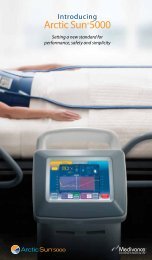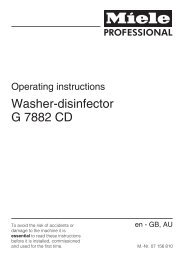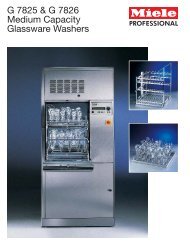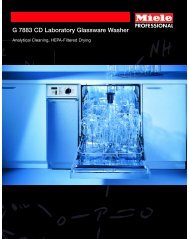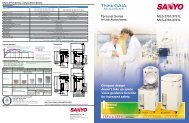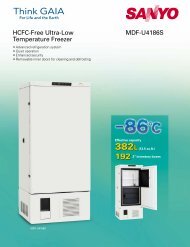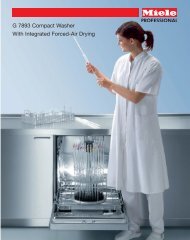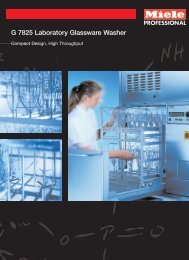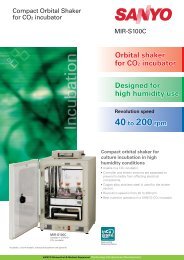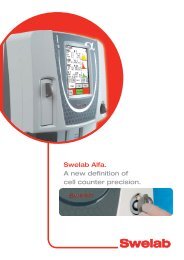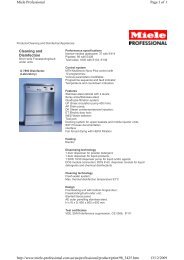G 7881 - Brochure - 2006 final.qxp
G 7881 - Brochure - 2006 final.qxp
G 7881 - Brochure - 2006 final.qxp
Create successful ePaper yourself
Turn your PDF publications into a flip-book with our unique Google optimized e-Paper software.
The Miele Thermal Disinfector is an Integral Part<br />
of Instrument Reprocessing<br />
6 Steps for Hygienic Processing of Instruments<br />
1. Containment and Transportation<br />
Immediately after use, contaminated<br />
instruments are transported safely* in<br />
cassettes or on trays to the sterilization<br />
area. Waste is segregated and disposed<br />
of in appropriate waste receptacles.<br />
2. Cleaning and Disinfection<br />
Instruments and cassettes should be<br />
placed directly into the machine after<br />
use at chairside. The contaminated<br />
instruments can be kept in the machine<br />
for interim dry storage for up to 6 hours.<br />
An automated washing program should<br />
then be selected. This system also offers<br />
an optional drying cycle, which is<br />
recommended.<br />
3. Inspection and Sorting<br />
After cleaning, disinfection, and drying,<br />
the instruments can be safely checked<br />
for normal wear and damage.<br />
4. Preparation for Sterilization<br />
Instruments and cassettes are placed in<br />
sterilization pouches or wrap, and sealed<br />
according to manufacturers directions to<br />
ensure sterilization until use.<br />
5. Sterilization<br />
Packaged instruments are processed<br />
through the complete cycle of a steam<br />
autoclave, chemical vapor sterilizer, or<br />
dry heat sterilizer, according to<br />
manufacturers’ directions for each type<br />
of sterilizer.<br />
6. Storage of Sterile Instruments<br />
It is essential to preserve sterility until<br />
use. Packaged sterilized instruments<br />
may be stored on clean shelves or in<br />
clean drawers.<br />
*Appropriate PPE including gloves, masks, eyewear, and<br />
protective outer lab coat or grown, must be worn while<br />
handling all unsterilized instruments according to the<br />
current OSHA Bloodborne Pathogens Standard.<br />
11



